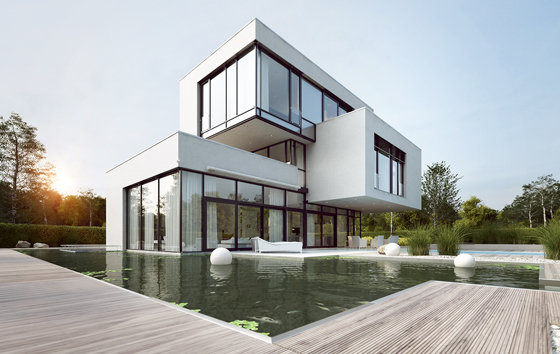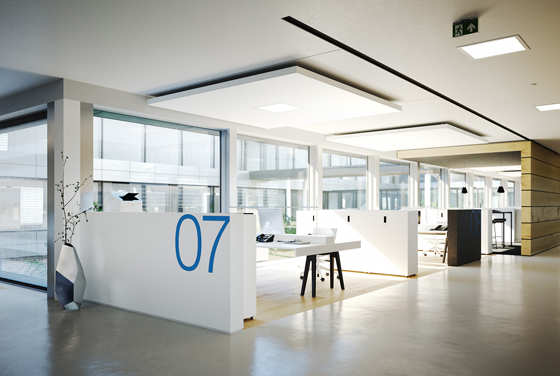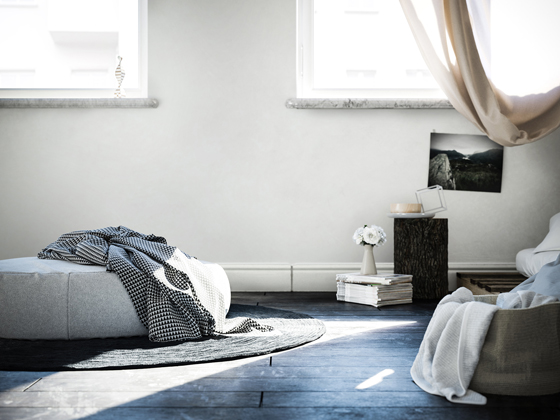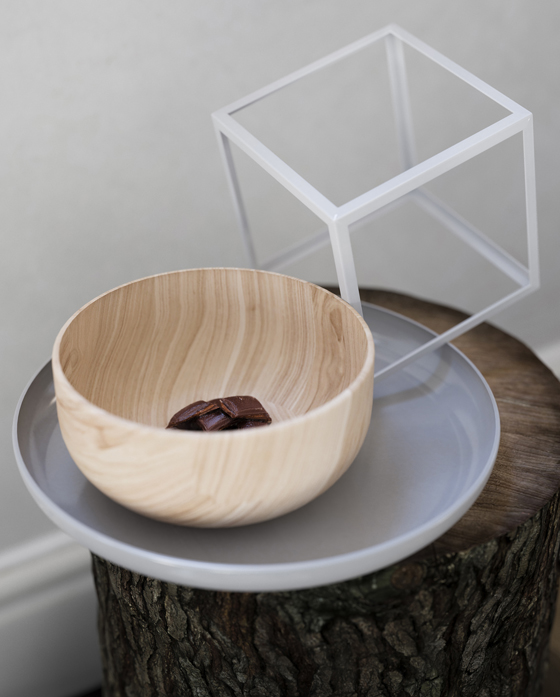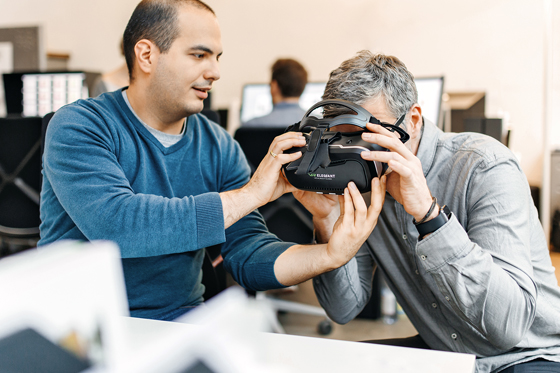For Real?: sooii
Storia del Marchio di Bettina Krause
Berlin, Germania
26.01.17
The Wuppertal firm of sooii creates perfect 3-D visualisations for architecture, interiors and products. Thanks to the latest technical features there are no longer any perceptible differences to conventional photographs.
"We believe in the natural and emotional image, in the power of photography – but with cutting-edge technology."

"We believe in the natural and emotional image, in the power of photography – but with cutting-edge technology."
×Can you tell a photograph from a visualisation? If you can, you are blessed with more than just a trained eye, because these days even experts who constantly deal with “genuine” and well-made “simulated” images can’t differentiate between the two. In the past, visualisations often appeared artificial or excessively technical, and the available software simply wasn’t capable of creating authentic-looking images. This has changed, with new technology having advanced to the point that true experts can now produce visualisations that are indistinguishable from photos.
For the Busch-Jaeger brand sooii has visualised a complete architectural set and showcased it in a hyperreal manner. Within the interactive space products can be experienced to the maximum
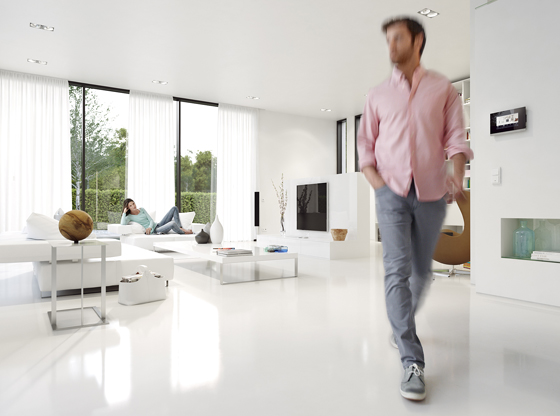
For the Busch-Jaeger brand sooii has visualised a complete architectural set and showcased it in a hyperreal manner. Within the interactive space products can be experienced to the maximum
×One specialist in this field is the Wuppertal company sooii. The firm creates high-end 3D visualisations in the areas of architecture, interiors and products. “We see ourselves as setting the pace for the new possibilities in virtual image production,” says sooii founder and managing director Arndt Johannes. “What we’re doing is a far cry from conventional visualisations.” Johannes knows that in virtual architecture today, anything is possible, any building style can be created, interior as well as exterior views can be produced, and all of this can be experienced on demand in animated, interactive form.
Their approach is akin to that of a “real” architect, explains Johannes: “We develop sophisticated architectural designs as if we were building them out of real stone and glass. It’s all about the three-dimensionality, working from the idea to the integrated planning and, without compromise, right down to the smallest detail.” In other sectors, too, demand for the virtual production of realistic images is growing. Accordingly, sooii also produces and orchestrates “brand spaces” for prestigious clients that set them apart from the competition. The company’s aim is no less than the replacement of the classical photograph.
Top: A virtual office building featuring a contemporary architectural concept. Rooms and products can be experienced interactively. Above: All the interior spaces of the virtual hotel have been developed down to the last detail. (Both for ABB)
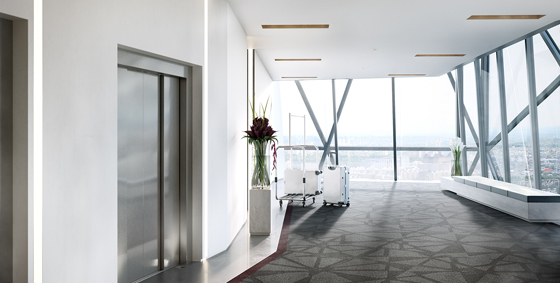
Top: A virtual office building featuring a contemporary architectural concept. Rooms and products can be experienced interactively. Above: All the interior spaces of the virtual hotel have been developed down to the last detail. (Both for ABB)
×Excellent total composition
Perfect pictures are no coincidence; they are composed. Similarly to any ambitious photographer, design professionals like sooii combine image concept, light and perspective in a comprehensive work – a virtual one. sooii seeks to set new standards in virtual photography, as Arndt Johannes explains: “We can work imperceptibly into any visual language, or develop entirely new visual languages that mark brands off from their competitors.”
But what makes photorealistic visualisations work? What does sooii do differently? Up to now, one distinguishing characteristic between photos and visualisations was photography’s capacity for detail fine enough to convey feelings and thereby affect the viewer emotionally. “A photographer who can use composition, light and content to communicate an emotion can do this today using visualisation too,” says Johannes. “We have the technology for it now.” And his interdisciplinary team of architects, product designers, stylists and 3D artists knows how to perfect the aesthetics and harmony of the overall picture. They all bring with them a great deal of experience and passion for the highest level of architecture and visual communication.
The objective of sooii is nothing less than to replace the classical photo
An alternative to the photograph
The visualisation industry is growing rapidly, as the possibilities have become nearly endless. sooii is enjoying rising demand from top-class clients. Johannes explains the success of his company: “Our images are a genuine alternative and complement to classical photography, because they’re equivalent in quality.”
While it is impossible to say for sure whether visualisation will replace photography in the future, it is probable that this will happen as soon as it becomes possible, and developments in this direction are proceeding apace. Johannes ventures a look ahead: “The future belongs to virtual media production. Within five years, every single company in this industry will be producing photographs virtually. The demands on the digital transformation simply necessitate it. At the same time, it’s a great opportunity for German small- and mid-sized companies to set themselves apart.”
Arndt Johannes, founder and managing director of sooii: "We develop sophisticated architectural designs as if we were building them out of real stone and glass – down to the smallest detail and from the initial idea to the finished planning."
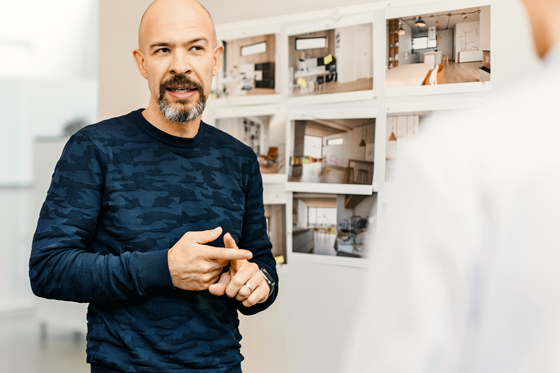
Arndt Johannes, founder and managing director of sooii: "We develop sophisticated architectural designs as if we were building them out of real stone and glass – down to the smallest detail and from the initial idea to the finished planning."
×First-rate visualisation calls for a deep understanding of image production from the marketing perspective, true mastery of the technology, and the eye and talent of a photographer. The combination of these factors makes possible what architects, designers and marketing companies aim to do: create emotive images that touch the viewer through their flawless simulation of reality.
© Architonic

